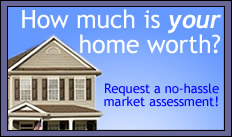Mortgage Rates and Pricing
Mortgage Rates and Pricing
Mortgage Rates and Pricing
What is your rate today?" prospective borrowers ask when they call up a mortgage lender shopping for rates. Well, there isn't just one rate. There is a choice of rates and the rates are very similar from one lender to the next - perhaps identical.
A Loan Officer's Rate Sheet
Every morning a loan officer gets a rate sheet - or a number of them. Mortgage bankers get the rate sheet from their company. Mortgage brokers get rate sheets from a number of wholesale lenders. They come in across the fax machine, across the computer, or through various secure web sites requiring confidential user names and passwords.
On volatile days, there may be revisions to the rate sheets. There have been times when rate sheets were revised more than five times in one day.
These rate sheets are not designed for public view. They are for loan officers' eyes only because they represent the "cost" of a loan to the loan officer, not the cost to the borrower.
Below is a sample of one section of a rate sheet for thirty-year fixed rate loans.
| Rate | Cost |
|---|---|
| 6.250% | 2.000 |
| 6.375% | 1.500 |
| 6.500% | 1.000 |
| 6.625% | 0.500 |
| 6.750% | 0.000 |
| 6.875% | (.500) |
| 7.000% | (1.000) |
| 7.125% | (1.500) |
| 7.250% | (1.875) |
| 7.375% | (2.125) |
| 7.500% | (2.375) |
The rate sheet shows the interest rate and the "cost" to the loan officer, expressed in "points." One point is equal to one percent of the loan.
Pricing the Loan
Different rates have different costs. Higher rates don't cost as much as lower rates. This is because the lender is going to earn more in interest over the life of the loan, so it makes sense to charge less. Conversely, it makes sense to charge more for a lower interest rate, because the lender will earn less interest over the long term.
Zero points is called "par" pricing. Numbers in parentheses indicate "premium" or "rebate" pricing, meaning that instead of having a "cost," money is actually paid back to the loan officer and the branch for originating a loan at that rate.
Almost all loan officers are paid on commission. The amount earned by the loan officer and the branch is subject to a "split" -- just like real estate agents. Part of it goes to the loan officer and part goes to the branch. Any fees that are not part of the points go to the branch (or company) and are not subject to the split.
Quoting Rates to You
Before quoting you an interest rate, the loan officer will add on how much he and his branch want to earn. The branch or company sets a policy on how little that can be (the minimum amount the loan officer adds on to his cost) but does not want to overcharge borrowers either (so they set a maximum the loan officer can charge) Between that minimum and maximum, the loan officer has a great deal of flexibility.
For example, say the loan officer decides he and his branch are going to earn one point. When you call and ask for a rate quote, he will add one point to the cost of the loan and quote you that rate. According to the rate sheet above, seven percent will cost you zero points. Six and three-quarters percent will cost you one point.
In our example, at 7.125% the loan officer and branch would earn one point and have some money left over. This could be used to pay some of the fees (processing, documents, etc), which is how you get a "no fees -no points" mortgage. You just pay a higher interest rate.
copyright 2002 by Terry Light and RealEstate ABC




